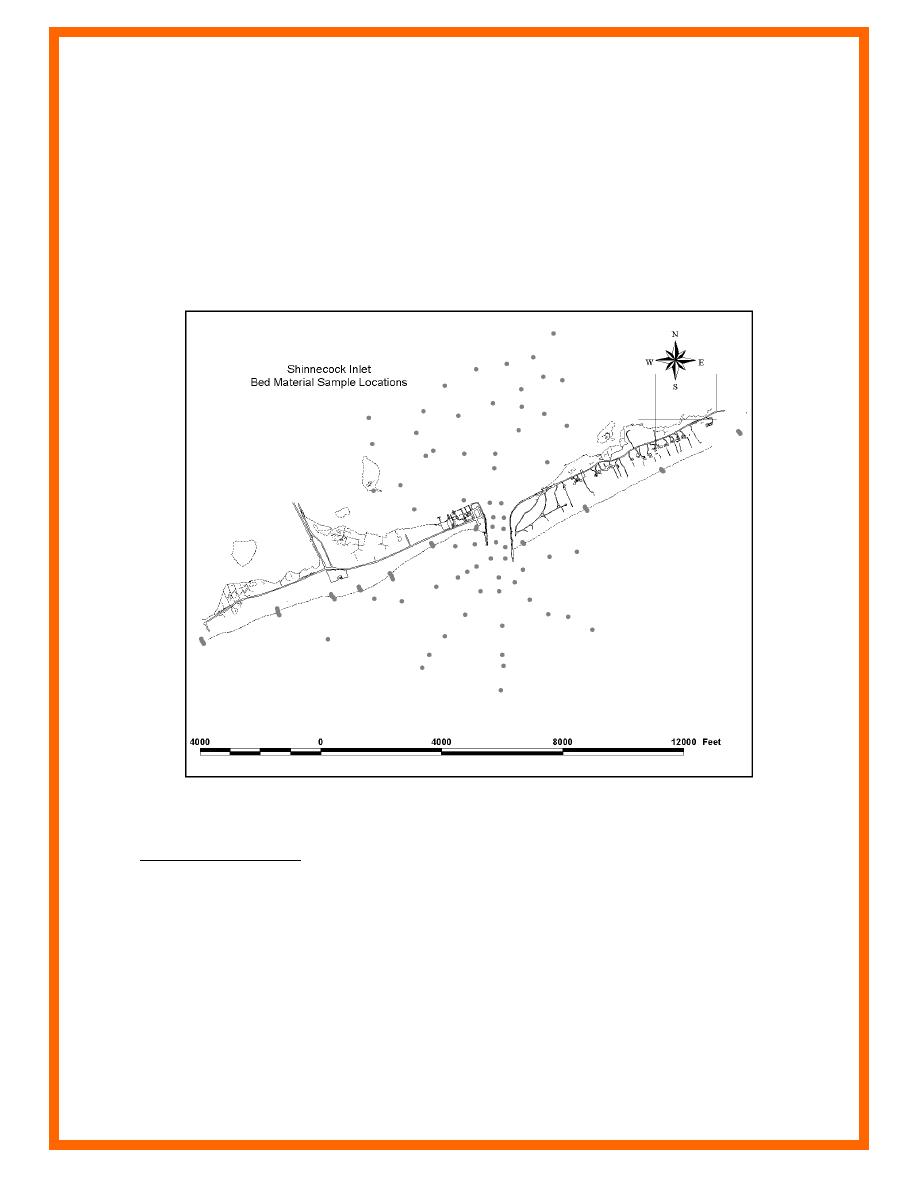
ERDC/CHL CETN-IV-24
March 2000
Once the method of sampling is chosen, a sampling scheme must be laid out to best define the
needed information for the site. Figure 4 represents a bed material sampling scheme as carried
out at Shinnecock Inlet, NY. This scheme was extensive to define all the different types of
material and material properties at the inlet, which runs through glacial sediments of varied
types. The number of samples and the coverage conform to project requirements. Accurate
positioning for repeatable collection at the predetermined locations can be achieved by using a
Differential Global Positioning System (DGPS) and navigation software.
Figure 4. Bed Material Sampling Scheme at Shinnecock Inlet, NY
10. Side-scan sonar (SSS). The SSS is deployed in reconnaissance and search applications such
as exploration, identification of bottom material, and navigational hazard mapping, and similar
applications. The SSS is capable of penetrating water too turbid for visual or optical inspection,
which makes it an effective tool in many environments. Its real-time display allows for onsite
decisions on data collection modifications; SSS is relatively fast and cost-effective, especially for
large-scale surveys. The SSS system includes a tow fish and cable and a control power unit
which processes, displays, and records data. The signals are transferred through an electrical
cable, which can also serve as the towing line, to the control unit and are then displayed in real-
time and stored.
11


 Previous Page
Previous Page
